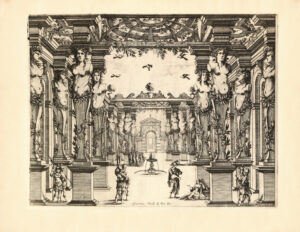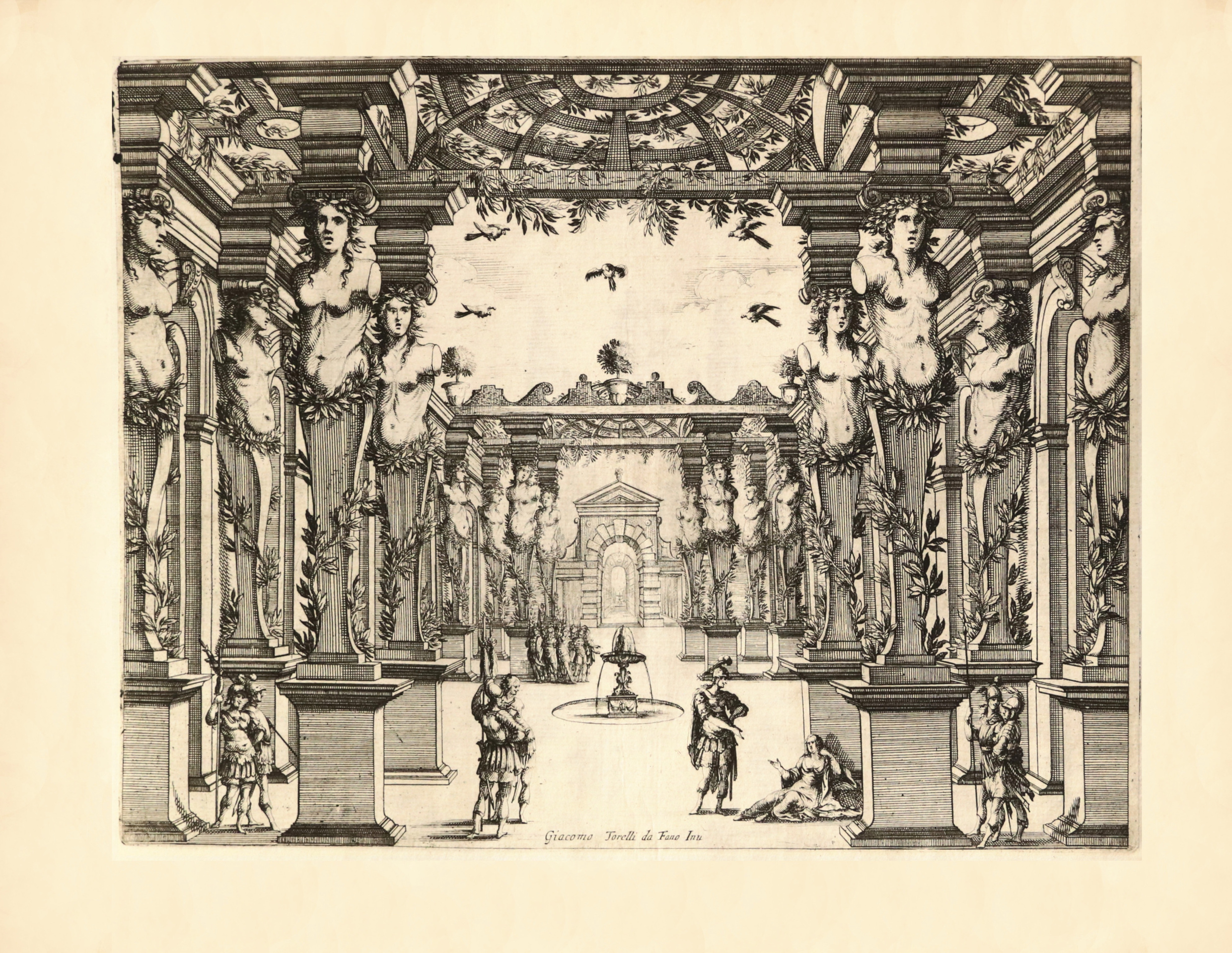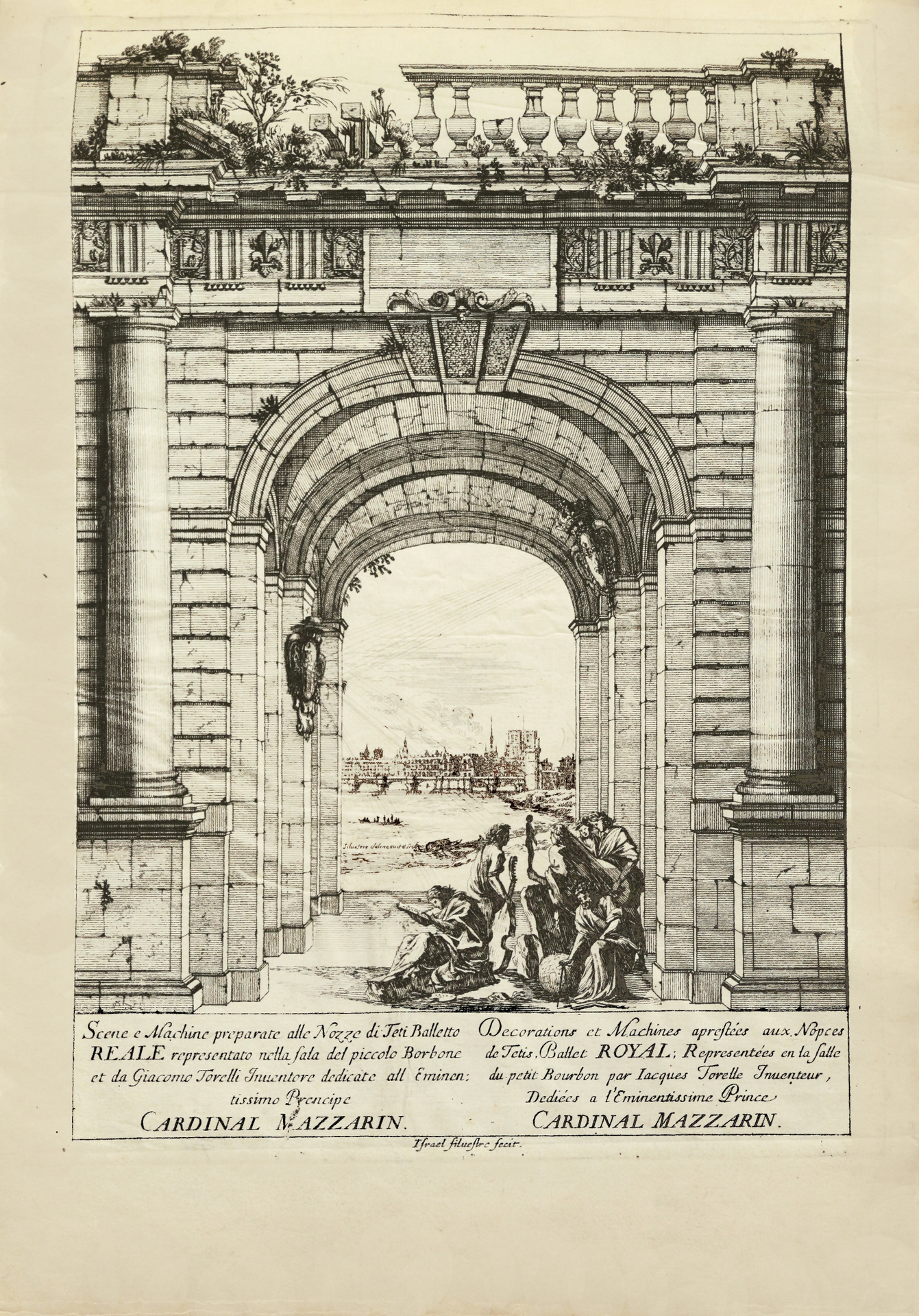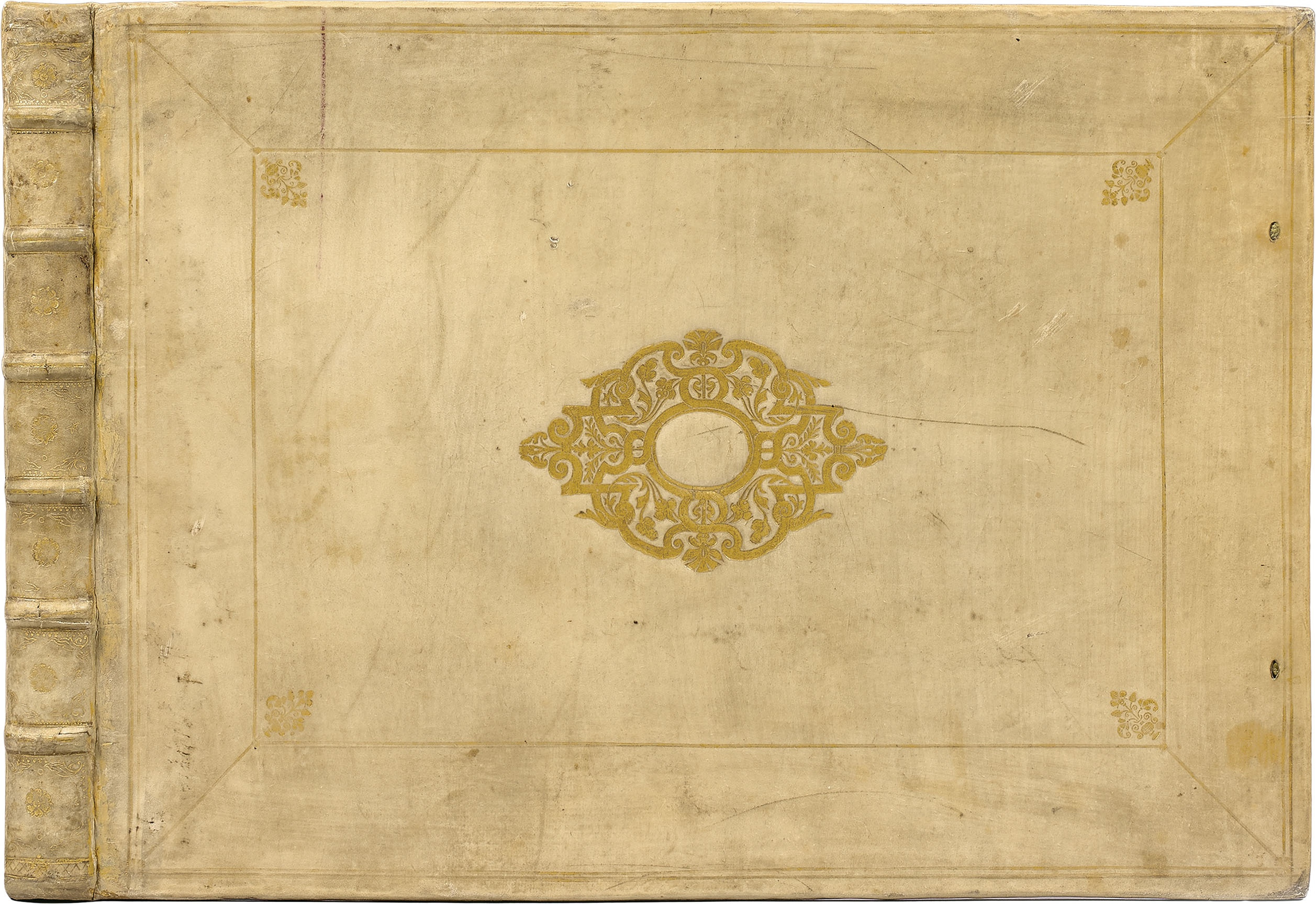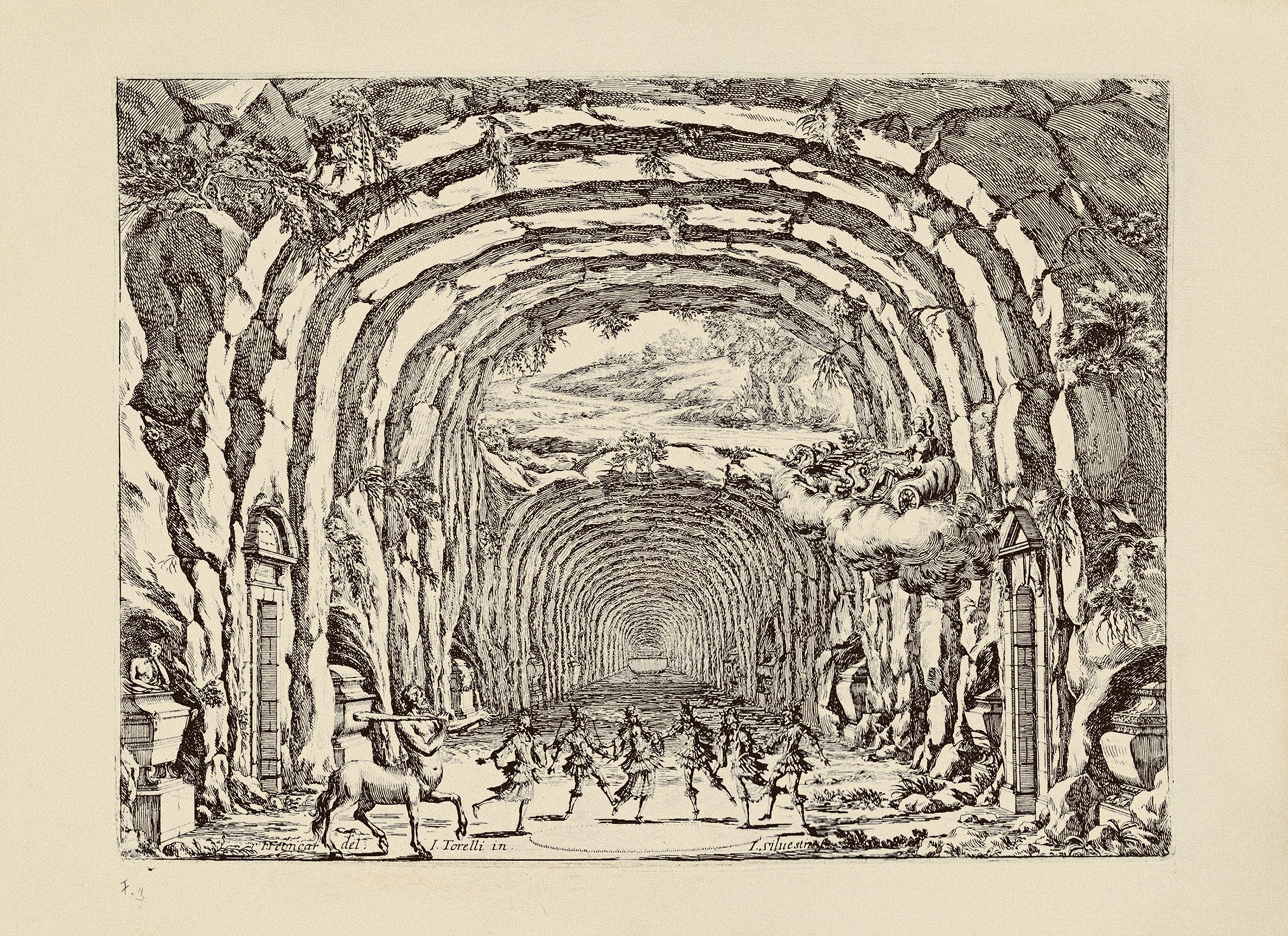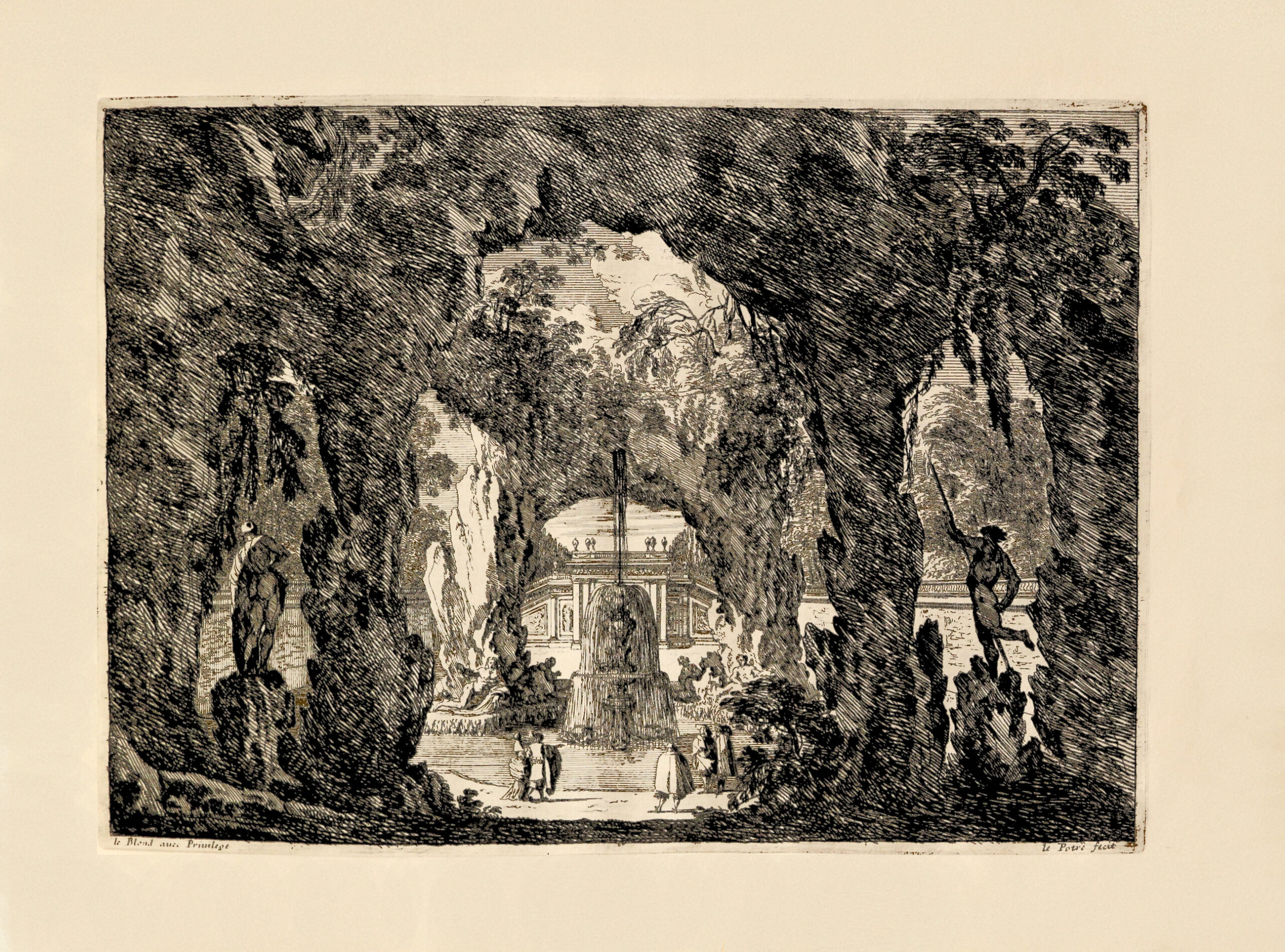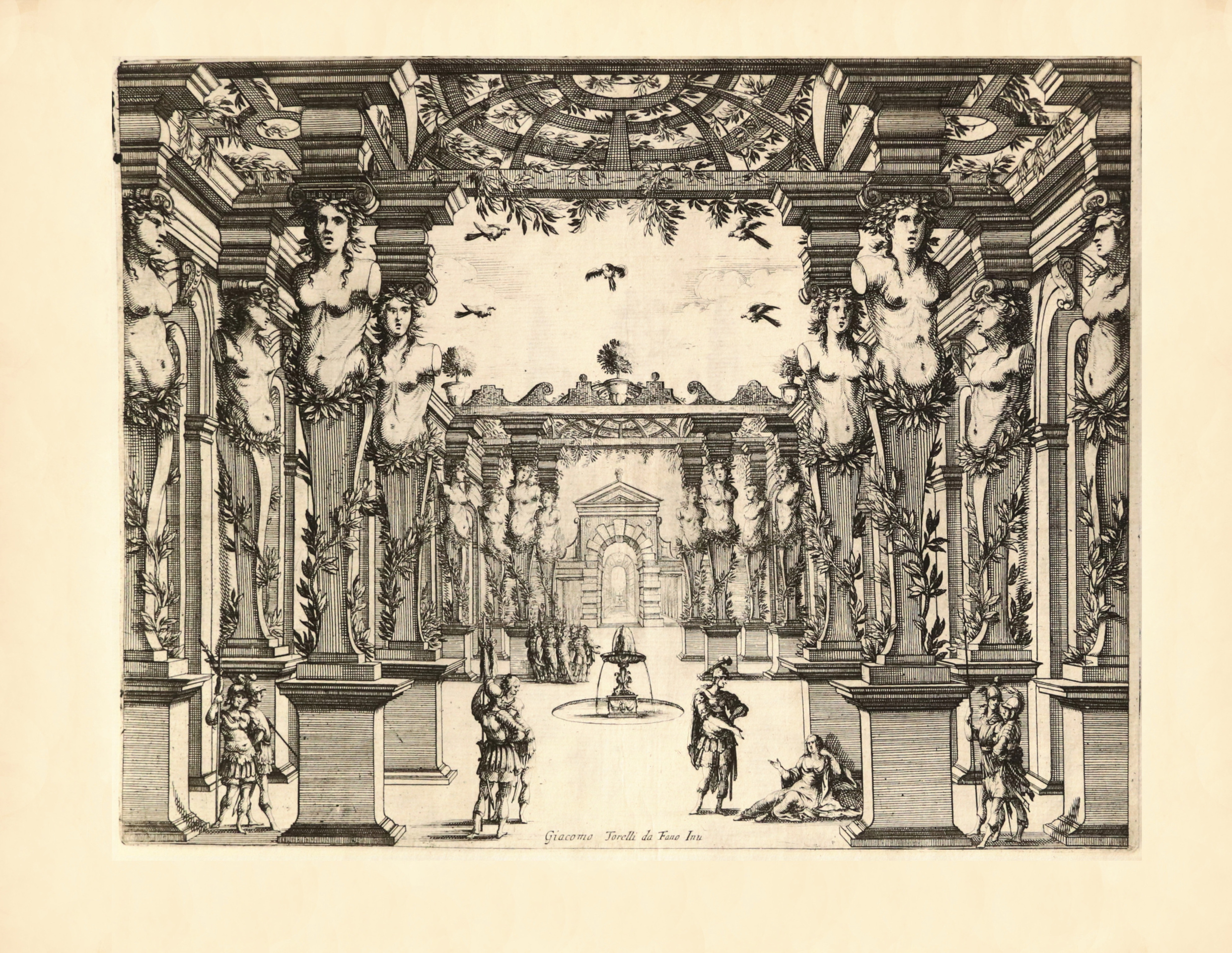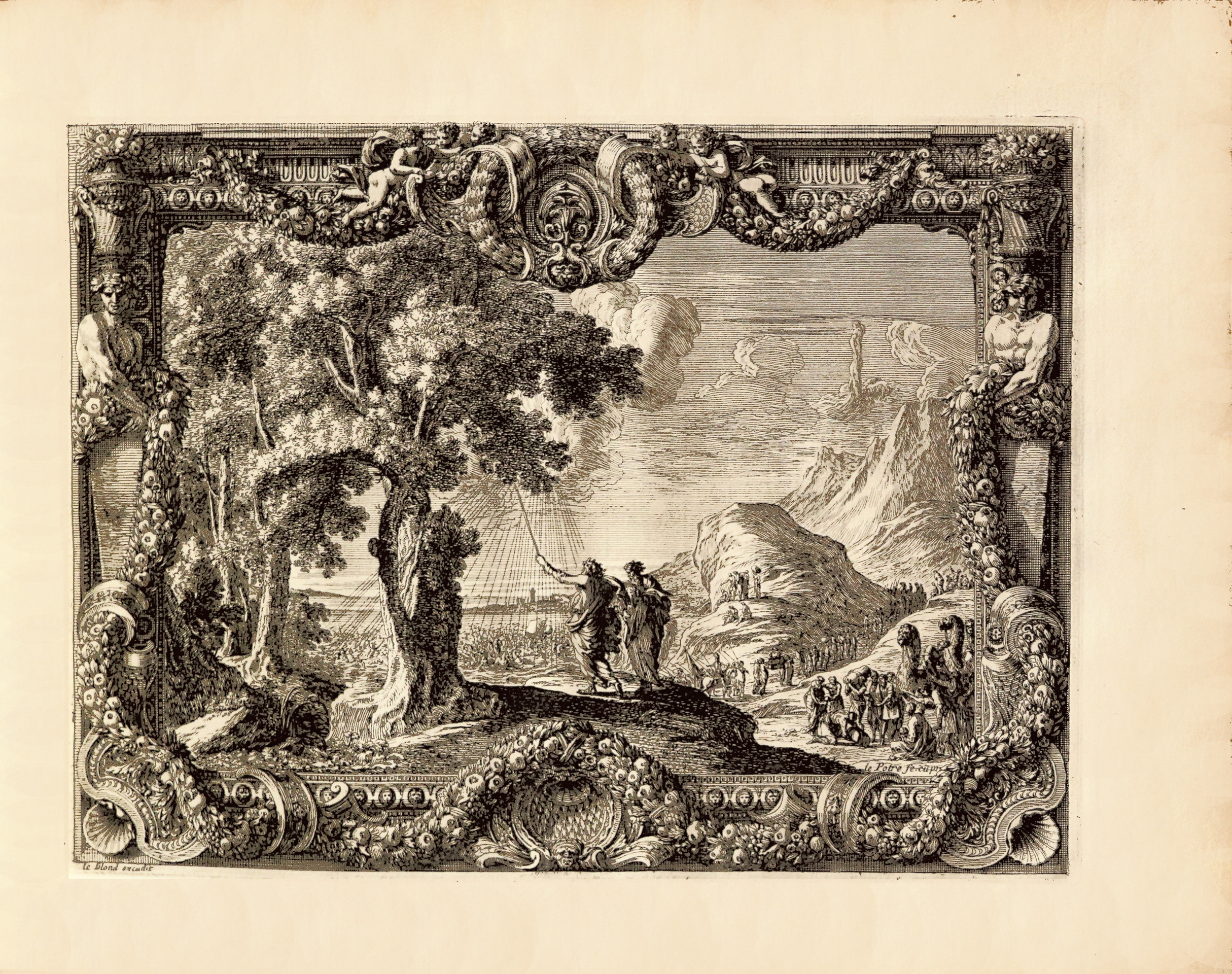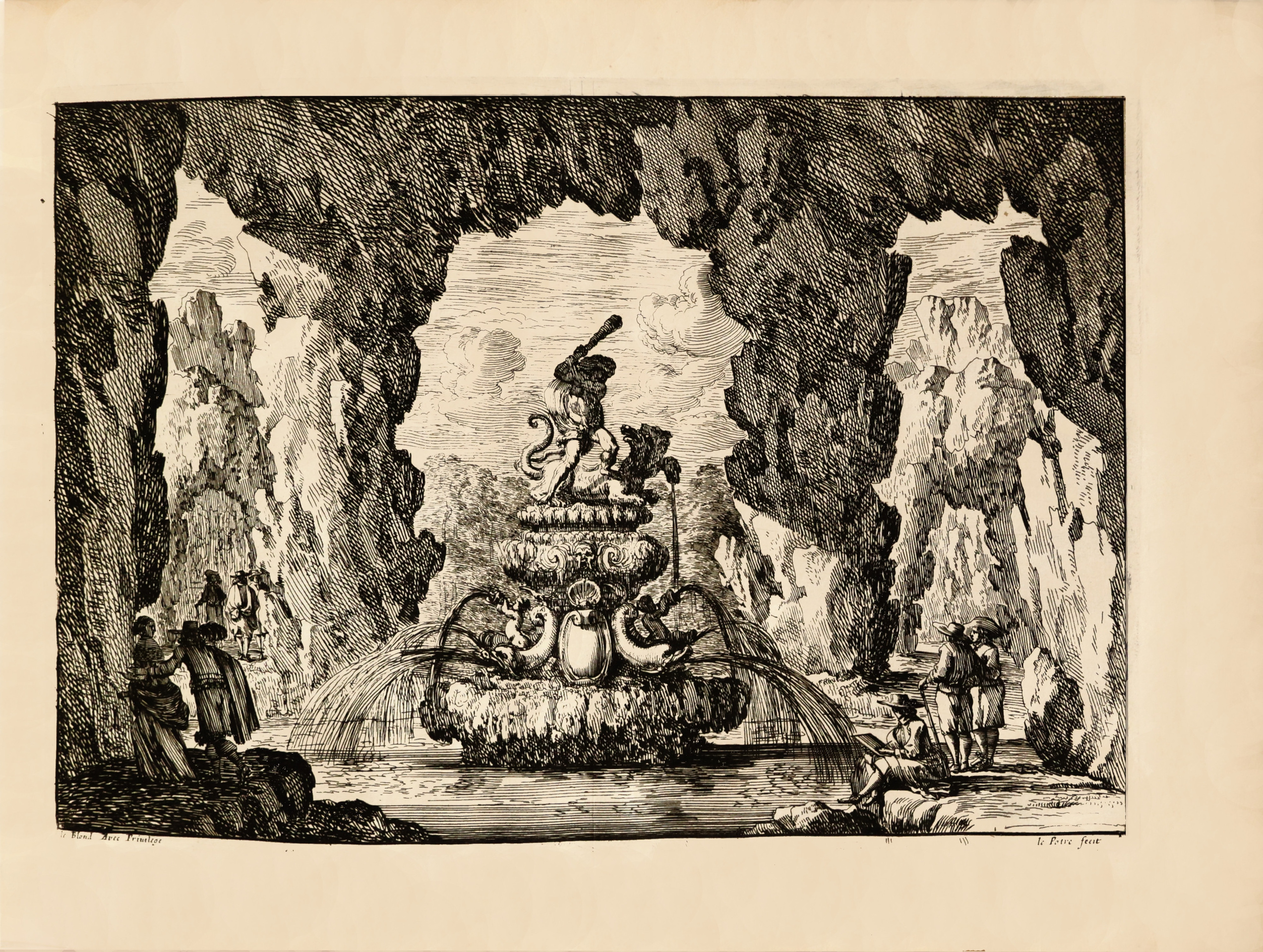Paris, 1654.
(1) title and 10 pl. engraved by I. Silvestre.
Chauveau, François (1613-1676).
6 plates of set designs.
N.p.n.d. [Paris, towards 1650].
Torelli. Feste Theatrali per la Finta pazza…
N.p.n.d. [Paris, towards 1645].
Allegoric title by Stéfano della Bella (1610-1664) and 5 engraved plates by Nicolas Cochin (1610-1686) after Torelli. Berlin, 4118.
Parigi, Alfonso (1606-1656).
5 plates of set designs including 4 sets of La Flora de Andrea Salvadori.
N.p. [Paris], 1628. Berlin, 4114.
Bella, Stefano della.
7 plates of set designs for “Le nozze de Gli dei”, by Giancarlo Coppola, after Alfonso Parigi’s drawings (without the title).
[Firenze, 1637]. Hofer, 70.
Chauveau, François. Alaric ou Rome vaincue.
Complete set with the title and the 10 engraved plates illustrating the first edition of the epic poem « Alaric ou la Rome vaincue » by Georges de Scudery.
[Paris, 1654].
Perelle, Gabriel (1603-1677).
16 round engravings of landscapes.
[Paris], Jean le Blond (towards 1670).
Berlin, 4465.
Le Pautre, Jean (1618-1682).
– Autels, tombeaux, cheminées. 8 plates.
– Paysages, architecture with rich ornamental frames including biblical scenes. 12 plates.
– Fontaines. 17 plates.
– Fonds baptismaux et églises baroques. 2 plates.
– Décorations baroques peintes et sculptées de murs et plafonds. 12 plates.
– Scènes du Nouveau Testament within very ornamental Baroque frames. 6 plates.
– Grands vases baroques in front of landscapes or within ornamental frames. 6 plates.
– Cariatides bearing Baroque vases. 6 plates.
Vouet, Simon (1590-1649) and Dorigny, Michel (1616-1665).
Livre de diverses grotesques, peintes dans le cabinet et bains de la Reyne Régente, au Palais Royal.
Paris, Galeries du Louvre, 1647.
Title and 14 plates. Berlin, 4004.
A total of 16 suites of engravings, large oblong 4to [280 x 389 mm] bound in decorated vellum, gilt edges. Contemporary binding.
Superb Baroque collection of 146 engravings in first issue of theatre set designs, perspectives, architectures, Baroque interior decorations, parks and fountains by the greatest Italian and French artists of Louis XIV’s reign: Torelli, François Chauveau, Simon Vouet, Stefano della Bella, Israël Silvestre, Jean le Pautre, Gabriel Perelle…
The collection opens with the brilliant set in first issue of the great perspectives of Giacomo Torelli’s Baroque set design, the most important “director” of the middle of the 17th century.
He produced his drawings for the first time for the audience of the theater of Venice then from 1645 as “director” of the company of the Italian comedy.
He was particularly interested in the “court entertainment” rather than opera, flattering King Louis XIV’s passion for dance.
His carrier in France suddenly ended in 1661 with Foucquet’s disgrace for who he had executed the set designs of the « Facheux » by Molière played in front of Louis XIV during the Celebration which provoked the imprisonment of his protector.
“Torelli brought the one-point perspective, set to its apogee with designs that revelled in a use of perspective that drew the eye to the horizon and beyond, theatre stages seemed to extend to infinity. Despite this apparent obsession with the infinite, however, Torelli also brought « closed » space to the stage. Interior scenes became more common and were often quite shallow. His innovations in stage machinery allowed not only stage flats to be changed, but also the borders of the sky. This allowed an interchange between interior and exterior sets, and Torelli would often alternate between open and enclosed sets to create a new sense of rhythm in the visual aspect of opera. His experimentation with different types of stage space where not limited to the contrast between interior and exterior either. Torelli would often delimit the foreground of an exterior set with a structure such as a hill or a fountain, allowing the audience only glimpses of the background perspective.
Torelli’s technical innovations included machinery that allowed sets to be changed in an instant, rather than slowly with a crew of at least sixteen stage hands. This, amongst other things, led to a notable increase in the number of sets per opera.
Torelli not only designed the sets but was also closely involved with innovations in stage machinery. He created new techniques for changing the scenes and also machinery for flying characters around the stage, mimicking weather effects, and so on, and was nicknamed the ‘grand stregone’ or the great magician”.
These absolutely delightful engravings, in first issue, engraved by I. Silvestre from François Francart’s drawings, after Torelli, excel in representing the refinement and the luxury of court entertainments under Louis XIV’s reign.
In his most famous ballets the King himself was pleased to dance on stage, such as in his « Noces de Thétis » where he successfully played Apollo’s character.
The collection is dedicated to Mazarin, the protector of Italian actors at the court of the regent Anne of Austria until 1661.
The set of 15 other sets, here in first issue, testify of the splendor of French Baroque decoration under the Regency of Anne of Austria and at the very beginning of Louis XIV’s reign, such as this set of Simon Vouet depicting “les grotesques peintes au Palais royal dans le cabinet et bains de la Reyne Régente”.
An extremely rare set complete with its title and its 10 plates illustrates the first edition of Georges de Scudery’s epic poem: « Alaric ou la Rome vaincue ». Paris, 1654.
Tchemerzine who only mentions for the first edition the copy from the National Library, indicated“figures by Chauveau” with a wrong collation, corrected by Lucien Scheler who adds “Chauveau’s figures are included in the pagination”. Tchemerzine, V, 776.
In the set of an extremely pure issue contained in this collection, no numbering is printed on the engravings.
Therefore, it is a specific issue, of the utmost rarity, printed before the numbering.
An exceptional collection of Baroque sets of theatre, architecture and decoration, engraved in first issue under the Regency of Anne of Austria and preserved in its contemporary decorated vellum binding.
It comes from the 6th Duc de Devonshire collection (1790-1858) with engraved ex-libris.
